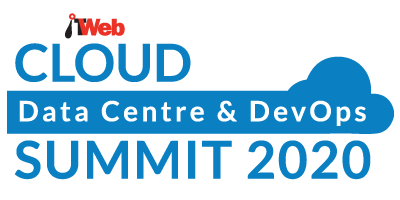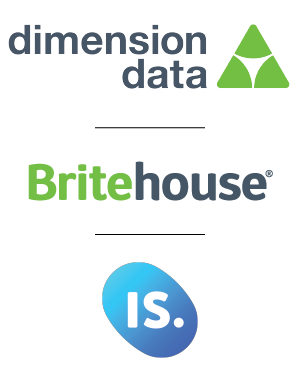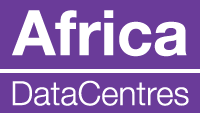14:00 - 17:30 Track one – Data Centre
14:00 - 17:30 Track two – Cloud sponsored by IBM
14:00 - 17:30 Track three – DevOps
Plenary session
Registration
Chairman’s welcome
Cliff De Wit, CTO and Co Founder, Dexterity Digital
Keynote Accelerating the Application Journey – public, private or hybrid: the ongoing evolution of cloud adoption to drive Application Delivery
Dave Funnell, Manager: Cloud Provider, VMware
- Applications are driving Cloud adoption
- Accelerating Cloud migrations
- Pitfalls to avoid in Cloud decisions
- Customer experiences of migration & cloud adoption
- Managing the Multi Cloud environment
Operating cloud: ITIL meets DevOps in a hybrid/multi-cloud environment
Grant Morgan, General Manager: Cloud, Dimension Data
Build your trust advantage - leadership in the era of data and AI everywhere
Ian Fletcher, Director: Institute for Business Value, Middle East & Africa, IBM
Refreshments and networking
Case Study Our real life journey building an Internet scale product from scratch using serverless cloud services.
Cliff De Wit, CTO and Co Founder, Dexterity Digital
Dustyn Lightfoot, Azure Solution Architect, Dexterity Digital
Panel Discussion How the cloud will enable the future of services
Moderator:Matthew Burbidge, Writer, Online Editor, ITWeb
Panelist:
Dave Funnell, Manager: Cloud Provider, VMware
Cliff De Wit, CTO and Co Founder, Dexterity Digital
Grant Morgan, General Manager: Cloud, Dimension Data
Lunch and networking
Track one – Data Centre
 The data centre remains the heart of any business. It is critical to the delivery of IT services, connecting and providing storage for a growing number of devices, users and workloads, which are producing more data than ever before. The modern, heterogeneous data centre has changed significantly from what it was a few years ago in technology advancements, complexity and scale.
The data centre remains the heart of any business. It is critical to the delivery of IT services, connecting and providing storage for a growing number of devices, users and workloads, which are producing more data than ever before. The modern, heterogeneous data centre has changed significantly from what it was a few years ago in technology advancements, complexity and scale.
Chairman’s welcome
Cliff De Wit, CTO and Co Founder, Dexterity Digital
The benefits of colocation in Africa
Stephane Duproz, CEO, Africa Data Centres
The colocation data centre market in Africa is on the brink of explosive growth, driven by greater access to broadband, a population that is hungry to go online and consume digital services, a rising demand for cloud, and an increasingly stringent regulatory environment that wants African data sovereignty.
During his presentation, Stephane Duproz, CEO of Africa Data Centres will discuss how carrier-neutral colocation providers give businesses access to a wider variety of public and private telecom services to meet their unique requirements. He will also cover how the likely impact of increased load-shedding in SA will drive an increase in the number of customers seeking colocation in these data centres, to mitigate the business risk of power failures at other corporate sites and lower-performance data centres.
- Colocation facilities are in the business of delivering uptime and are the best choice for disaster backups. (Reliability and upline)
- With carrier-neutral data centres, customers can choose a single connectivity provider or can opt to have several and enjoy multi-network optimisation. In addition, should the customer want to change that provider, it is as simple as unplugging one cable and plugging in another, which takes a matter of minutes. There is no need to migrate IT infrastructure.
- Carrier-neutral colocation facilities can play a key role in the importance of data sovereignty is acknowledged by regulators in the financial sector, who are also demanding greater compliance in terms of data handling and storage.
- Colocation can save your company money in addition to turning expensive capital investments into low operating expenses that fit your budget.
From the edge, to the cloud and back
Trent Odgers, Cloud & Hosting Manager Southern Africa, Veeam Software
This presentation will cover three crucial elements of cloud data management, namely, backup modernisation, hybrid cloud acceleration and data security. All workloads and data need protection, no matter the location, because data at the edge is sometimes as critical as data in the core, because it is live data. Businesses also need to reliably automate their core backup and recovery abilities to ensure that no matter the scenario, their businesses remain online. Moreover, in this fast-paced digital economy, data movement must be seamless and cloud backup, restore, DR and migration shouldn’t be the headache of the past. Finally, reducing risk and downtime is essential and safeguarding application and workload updates before deploying is a key component. New age software solutions can empower modern application delivery and deployment by enabling businesses to reuse their backup data for Dev & Ops.
Refreshments and networking
Latency as a driver for more data centre hubs
Dermot Reidy, Senior Development Adviser, Enterprise Ireland
The Benefits of adopting DataOps to deliver a Big Data Transformation Project
Gershon Venkatsamy, Data Enthusiast
I recently had the privilege of being involved in a Big Data transformation project and DataOps principles were used throughout the delivery.
The presentation will demonstrate how the adoption of these principles resulted in a solution that meets customer needs, is maintainable and focuses on data quality.
DataOps principles did not just help with the system development but also helped to transition the people involved into a new way of work and helped to establish a culture where teamwork and collaboration is promoted.
How do we use DataOps to ensure:
- the customer is content
- change is managed correctly
- teamwork is encouraged
- communication is constant
- re-usable code is a focus
- the solution is simple and easy to maintain
- performance is a key consideration for the team
- a repeatable deployment process is built
- deliver a quality product
Cocktails and networking sponsored by 
Track two – Cloud sponsored by IBM
 In the next few years, cloud computing is set to experience profound advancement and change. Alongside the big cloud computing and storage providers, there’s the IOT, AI and the edge, and we can expect to see an increase in the number of vendors offering tailored cloud services, allowing organisations to harness cloud capabilities for particular workloads that would normally require purpose-built applications. Security will remain a major challenge, and the types of cloud we see today, private, public, multi and hybrid will continue to be split into myriad cloud categories.
In the next few years, cloud computing is set to experience profound advancement and change. Alongside the big cloud computing and storage providers, there’s the IOT, AI and the edge, and we can expect to see an increase in the number of vendors offering tailored cloud services, allowing organisations to harness cloud capabilities for particular workloads that would normally require purpose-built applications. Security will remain a major challenge, and the types of cloud we see today, private, public, multi and hybrid will continue to be split into myriad cloud categories.
Chairman’s welcome
Onur Bucukoglu, Director, Hybrid Cloud Integration, Middle East & Africa, IBM
Case Study Cloud as an enabler
Lawrance Reddy, Technical Director, Cloudlogic South Africa
Jayson Naidoo, CTO, Educor Holdings
Cloudlogic was tasked with relocating Rewardsco’s IT infrastructure over 11km from Riverhorse Valley to the Umhlanga Ridge, in Durban, without downtime or service interruptions to the company’s core business.
How data protection can enrich your SaaS strategies
Danie Marais, Director of Software Development, Redstor
Businesses recognise the value of SaaS-based applications, with e-mail and collaboration being the highest adopted. However, the euphoric “public cloud-first” and “public cloud-only” strategies as a quick fix for modernisation have led to a haphazard adoption of cloud services.
With data now fragmented across multiple silos, many organisations lack a unified data management architecture to manage, protect and recover data across technologies. According to research by analyst IDC, cloud data management is now one of the number one priorities and challenges, alongside security.- How data protection can help organisations do more with their SaaS strategies.
- What can be done now that information governance, meeting SLAs, and regulatory compliance (GDPR & POPI) are becoming increasingly complex
Refreshments and & Networking
Case Study Cloud security – the shared responsibility model
Simphiwe Makhoba, Cloud Architect Lead, Exxaro Resources
With the rapid growth in Cloud adoption, security has become the responsibility for both the cloud provider and the customer which leads to the Shared Responsibility Model of Cloud Security.
The shared security model emphasis on the components that forms part on security “of” the cloud and security “in” the cloud.
- What is the Shared Responsibility Model of Cloud Security
- AWS & Azure Shared Responsibility Model of Cloud Security
- Use Case : Access Management
How do the different cloud approaches stack up against each other from a cost perspective?
Steen Dalgas, client strategy for cloud, Nutanix
Cocktails and networking sponsored by VMware.
Track three – DevOps
 DevOps has been redefined over the past two years, and its value and benefits are finally being recognised. Its ability to boost an organisation’s competitive edge and enhance its offerings means it’s being viewed as a panacea by IT leaders who are tasked with shortening the systems development life cycle while delivering features, fixes, and updates timeously. And it goes without saying that these all need to align with the business objectives. For CIOs who want to improve the efficiency of their systems and drive innovation, DevOps, and the speed, agility and economies of scale it brings, is no longer a case of ‘if’ but ‘how’.
DevOps has been redefined over the past two years, and its value and benefits are finally being recognised. Its ability to boost an organisation’s competitive edge and enhance its offerings means it’s being viewed as a panacea by IT leaders who are tasked with shortening the systems development life cycle while delivering features, fixes, and updates timeously. And it goes without saying that these all need to align with the business objectives. For CIOs who want to improve the efficiency of their systems and drive innovation, DevOps, and the speed, agility and economies of scale it brings, is no longer a case of ‘if’ but ‘how’.
Chairman’s welcome
Freddy Mahhumane, DevOps Lead | Data Engineering, ABSA
Case Study DevOps: The Infinite Mindset
Freddy Mahhumane, DevOps Lead | Data Engineering, ABSA
- How to create a good DevOps team
- Understanding the role of Site Reliability Engineering in the DevOps world.
- How to be a successful DevOps Leader
Case Study Creating a Compliant Database Delivery Pipeline with The Three Ways of DevOps in Mind
James Grant, Automation & DevOps Lead, Standard Bank Group
Refreshments and & Networking
Google's new enterprise hybrid and multi-cloud platform Anthos.
Jonathan Frankel, Customer Engineer, Google Cloud
Case Study Moving applications to modern architecture
Rudi Strydom, Head of IT Operations, Technology and Architecture, Imperial Logistics


















